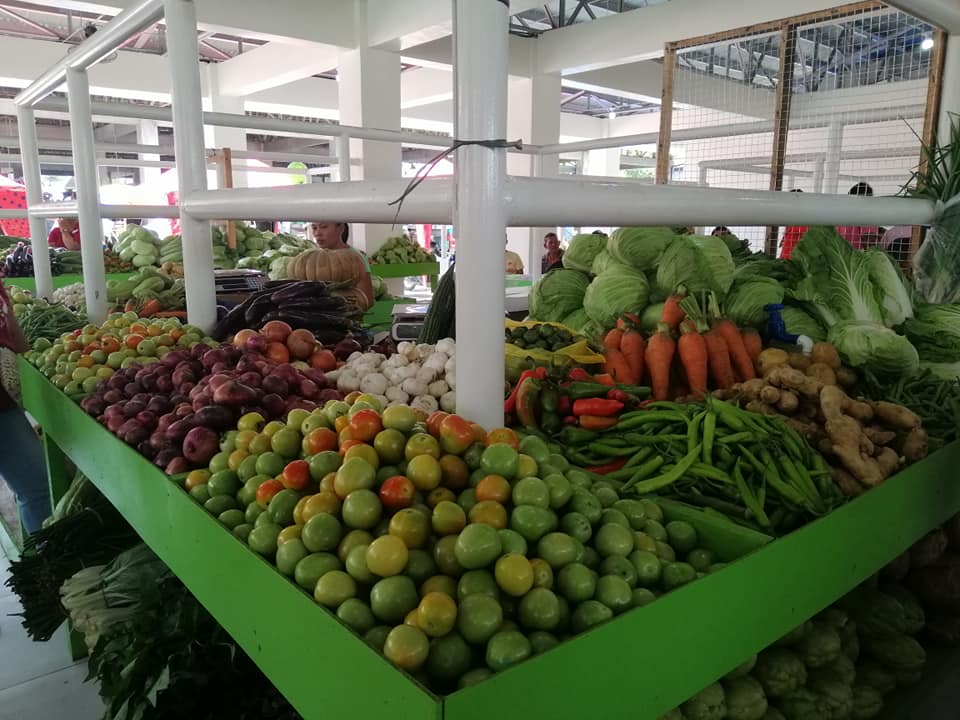Story/Photos: BOB VILLABLANCA

Increases in prices of basic goods and services may affect all sectors but the poor Filipino families are hit more – right on their guts – with their food getting less in volume and quality.
For Linda Sabornido, a 34-year-old housewife with three children, wise budgeting on what to serve on the table may be the key but the continued increase in prices while income remaining constant, or even less, the challenge is getting unsurmountable.
"Last month this only cost P50 for a one-fourth kilo. Now it is P60," she says referring to a small-sized dried sardine wrapped on a cellophane inside her plastic bag. "There are 24 pieces in it which is enough for our breakfasts for the week."
Her market bag also contains gourds like ampalaya, upo, and patola, as well as okra, squash and string beans. She also bought small onions, three heads of garlic, a dozen of large eggs and fresh dilis. All cost her almost P600.
"I don't buy leafy vegetables because they easily wilt and don't last long. I only go to market once a week so the vegetables should have a longer shelf life," she added. "For the fish, I only buy the smaller ones which are cheaper and easier to apportion to my children."
For Linda Sabornido, a 34-year-old housewife with three children, wise budgeting on what to serve on the table may be the key but the continued increase in prices while income remaining constant, or even less, the challenge is getting unsurmountable.
"Last month this only cost P50 for a one-fourth kilo. Now it is P60," she says referring to a small-sized dried sardine wrapped on a cellophane inside her plastic bag. "There are 24 pieces in it which is enough for our breakfasts for the week."
Her market bag also contains gourds like ampalaya, upo, and patola, as well as okra, squash and string beans. She also bought small onions, three heads of garlic, a dozen of large eggs and fresh dilis. All cost her almost P600.
"I don't buy leafy vegetables because they easily wilt and don't last long. I only go to market once a week so the vegetables should have a longer shelf life," she added. "For the fish, I only buy the smaller ones which are cheaper and easier to apportion to my children."

Last year, Sabornido says, she allotted P500 a week for their food, excluding rice, with an occasional treat of chicken feet when her husband gives an extra. Her husband, a pedicab driver, earns a take-home average of P200 a day.
Sabordino's style is typical to thousands of poor Filipino households who are the most vulnerable to increases in the country's inflation.
The Congressional Policy and Budget Research Department of the House Representatives, in a report last December 2022, indicates that food represents the single largest expense, accounting for 43% of total expenditures in a family.
The CPBRD report also shows that the poorer the family is; the higher allocation it gets from their family income.
"Food expenditures among households in the bottom 10 percent income group had a higher share at 61% compared to the 29% for households in the top 10 percent income group," the report noted.
Sabordino's style is typical to thousands of poor Filipino households who are the most vulnerable to increases in the country's inflation.
The Congressional Policy and Budget Research Department of the House Representatives, in a report last December 2022, indicates that food represents the single largest expense, accounting for 43% of total expenditures in a family.
The CPBRD report also shows that the poorer the family is; the higher allocation it gets from their family income.
"Food expenditures among households in the bottom 10 percent income group had a higher share at 61% compared to the 29% for households in the top 10 percent income group," the report noted.

Bottom 30%
On Friday, the Philippine Statistics Authority in Eastern Visayas reported that the inflation for the bottom 30% income households in the region in June 2024 was at 5.2%, which is higher than the 4.6% inflation rate of the income bracket in May 2024. No data was provided for the inflation rate across all sectors.
The inflation rate is based on the prices of goods and commodities in 2018.
In comparison, though, the 4.6% inflation rate in May for the bottom 30% income households is higher by one percentage point than the 3.6% regional inflation rate for all sectors. This indicates that the bulk of the inflation hit the poor more than those in higher income groups.
In the same report, PSA-8 said food and non-alcoholic beverages recorded an inflation rate of 8.2 percent in June 2024 from 7.7 percent in May 2024 contributing to the uptrend. Food and non-alcoholic beverages account for 91.9 percent contribution to the inflation.
"The increase of food inflation rate was primarily due to the annual price increase in meat and other parts of slaughtered land animals," the report said. It also noted the increasing cost of vegetables, tubers and cooking bananas.
For Sabordino, she said whatever government data may tell may seem irrelevant to her but all she knows is food on the table is getting more scarce.
"All I hear in the news is the government's tiff with China. I hope somebody in the government will pay attention to us and address our very basic problem on food."(CJ/jmm/BV)
On Friday, the Philippine Statistics Authority in Eastern Visayas reported that the inflation for the bottom 30% income households in the region in June 2024 was at 5.2%, which is higher than the 4.6% inflation rate of the income bracket in May 2024. No data was provided for the inflation rate across all sectors.
The inflation rate is based on the prices of goods and commodities in 2018.
In comparison, though, the 4.6% inflation rate in May for the bottom 30% income households is higher by one percentage point than the 3.6% regional inflation rate for all sectors. This indicates that the bulk of the inflation hit the poor more than those in higher income groups.
In the same report, PSA-8 said food and non-alcoholic beverages recorded an inflation rate of 8.2 percent in June 2024 from 7.7 percent in May 2024 contributing to the uptrend. Food and non-alcoholic beverages account for 91.9 percent contribution to the inflation.
"The increase of food inflation rate was primarily due to the annual price increase in meat and other parts of slaughtered land animals," the report said. It also noted the increasing cost of vegetables, tubers and cooking bananas.
For Sabordino, she said whatever government data may tell may seem irrelevant to her but all she knows is food on the table is getting more scarce.
"All I hear in the news is the government's tiff with China. I hope somebody in the government will pay attention to us and address our very basic problem on food."(CJ/jmm/BV)






















